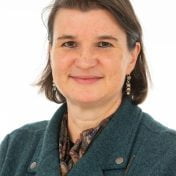Modèles opérationnels
Le rapport « La situation mondiale des transferts monétaires » du CALP Network identifie plusieurs types de modèles opérationnels, dont les consortiums et les alliances, les mécanismes de distribution des transferts partagés, un modèle de distribution des transferts monétaires articulé autour d’une seule organisation et l’intégration de systèmes.
« La structure générale au sein de laquelle les organisations travaillent conjointement […] pour distribuer les transferts monétaires […] lors d’interventions et d’activités d’analyse, et de la conception et de la mise en œuvre de programmes. »
Notre définition d’un modèle opérationel
Accroître l’échelle des transferts monétaires permet de transformer la manière dont l’aide humanitaire est distribuée. Cette décision a des conséquences sur les rôles des organisations dans le cadre de plusieurs modèles opérationnels, et sur la capacité des modèles à établir un lien avec les systèmes de protection sociale. Un changement d’échelle aura également un impact sur les partenariats avec des fournisseurs de technologies et de services financiers et sur la manière dont différents modèles interagissent avec d’autres formes d’assistance.
Priorités actuelles
Depuis fin 2016, le CALP Network assure la coordination d’un programme d’apprentissage visant à répondre aux questions suivantes :
- Quels sont les modèles opérationnels disponibles pour les organisations mettant en œuvre les transferts monétaires ?
- Comment différents modèles ont-ils amélioré l’efficience, l’efficacité et la transparence des transferts monétaires dans divers contextes ?
- Quels sont les modèles opérationnels les plus appropriés dans chaque contexte ?
Nous continuerons de compiler et diffuser notre base de données probantes sur les modèles opérationnels.
Nous sommes également partenaire du consortium Cash Monitoring, Evaluation, Accountability, and Learning Organizational Network (CAMEALEON), piloté par le Conseil norvégien pour les réfugié·es, qui est responsable du suivi et de l’évaluation indépendantes du programme d’assistance monétaire à usages multiples du PAM au Liban. À ce titre, nous menons des recherches et des analyses concernant l’optimisation des ressources et la redevabilité au sein du modèle opérationnel.
Contenu présenté

Operational Models: Accountability to affected people
Webinar

MEAL in Emerging Operational Models
Webinar

CTP Operational Models Analytical Framework
Guidelines and Tools
The State of the World’s Cash Report launched by the CALP Network in February 2018 highlights trends in the uptake of various operational models for the delivery of cash at scale in humanitarian response. Current decision making on the choice between these various operational models is highly influenced by context, and by the policies and approaches of donor agencies. Decision making on...
Thematic lead
Contenu récent
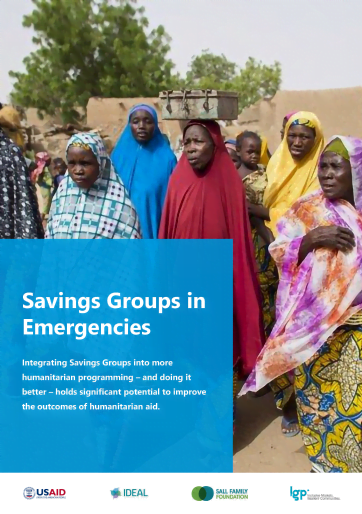
Savings Groups in Emergencies Learning Brief
Guidelines and Tools
We know that savings groups work – and that they are powerful. But, in emergencies, we must revisit some of our approaches and assumptions. Integrating savings groups into more humanitarian programming – and doing it better – holds significant potential to improve the outcomes of humanitarian aid....
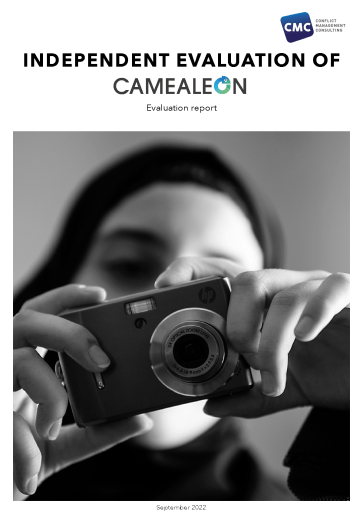
Independent evaluation of CAMEALEON
Report
CAMEALEON is an independent initiative to provide monitoring, evaluation, accountability and learning support to the World Food Programme (WFP)’s multi-purpose cash (MPC) programme for Syrian refugees in Lebanon. Established in 2017, CAMEALEON’s main purpose is to bridge evidence gaps, strengthen...
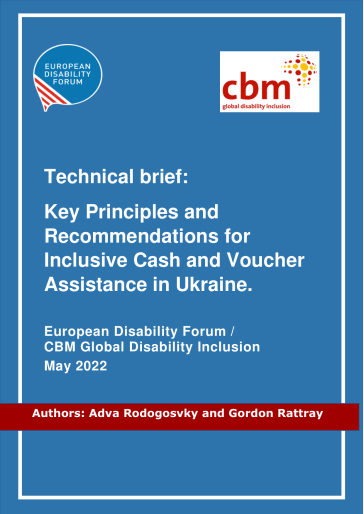
Technical brief: Key Principles and Recommendations for Inclusive Cash and Voucher Assistance in Ukraine.
Guidelines and Tools
A technical brief on inclusive cash and voucher assistance in Ukraine, developed together with the European Disability Forum. The brief is intended to provide general guidance for humanitarian agencies operating in Ukraine on how to implement Disability Inclusive CVA.

Common Barriers to Accessing Inclusive Cash and Vouchers Assistance
Guidelines and Tools
A short list of the most common barriers to ensuring disability inclusive CVA programming
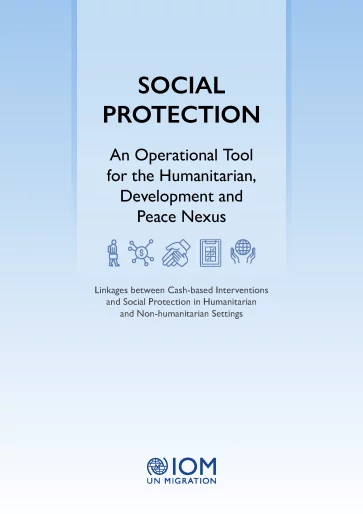
Social Protection: An operational tool for the humanitarian, development and peace nexus – Linkages between cash-based interventions and social protection in humanitarian and non-humanitarian settings
Policy paper
This paper explores linkages between Cash-Based Interventions (CBIs) and social protection in humanitarian and nonhumanitarian settings, focusing on linkages between humanitarian aid and sustainable social protection for migrants, including communities affected by forced displacement such as IDPs and...

DG ECHO Thematic Policy Document on Cash Transfers
Policy paper
DG ECHO released its Thematic Policy document on Cash Transfers in March 2022. The document provides guidance primarily to DG ECHO’s partners and staff, but also to the wider cash community with the objective of collectively enhancing the quality and efficiency of cash programmes and of humanitarian...
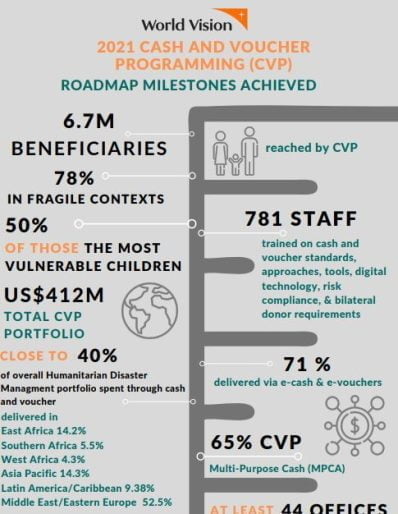
2021 Cash And Voucher Programming (CVP) Roadmap Milestones Achieved
Report
Summary Report of World Vision’s global progress report and milestones (against WV’s global Cash Roadmap Strategy) in Cash Voucher Assistance (Cash Voucher Programming-CVP) facilitated by World Vision in over 44 countries, reaching more than 6.7 Mio vulnerable people (78 % in Fragile Contexts) in...
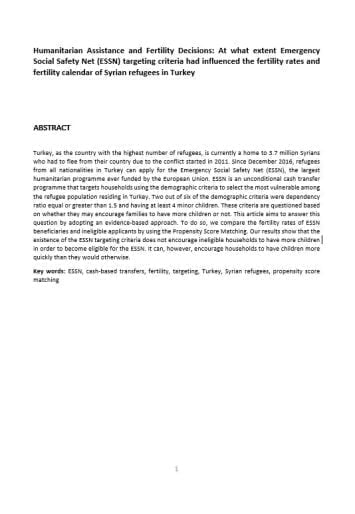
Humanitarian Assistance and Fertility Decisions: At what extent Emergency Social Safety Net (ESSN) targeting criteria had influenced the fertility rates and fertility calendar of Syrian refugees in Turkey
Report
Turkey, as the country with the highest number of refugees, is currently a home to 3.7 million Syrians who had to flee from their country due to the conflict started in 2011. Since December 2016, refugees from all nationalities in Turkey can apply for the Emergency Social Safety Net (ESSN), the largest...

Adaptation of Operational Activities to Humanitarian Crises – COVID-19 pandemic
Report
Turkish Red Crescent’s (TRC) Kızılaykart Cash Based Assistance Programmes Coordinatorship continues to work relentlessly with the aim to develop shock-responsiveness and continue to alleviate human suffering caused by conflicts, involuntary migration and socioeconomic challenges in the face of the...
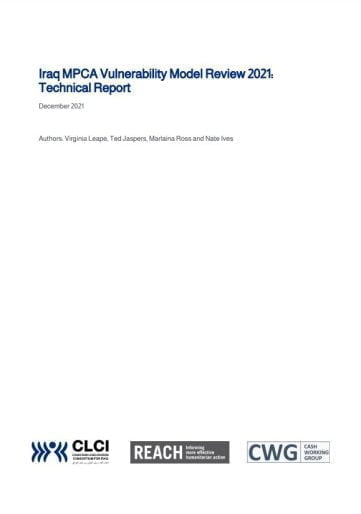
Iraq MPCA Vulnerability Model Review 2021: Technical Report
Guidelines and Tools
A new socio-economic vulnerability assessment tool (SEVAT) used to target vulnerable IDP, returnee, and host community households eligible for multi-purpose cash assistance (MPCA) in Iraq was developed in 2021. Actors delivering MPCA in Iraq have used a harmonised tool to identify households since 2016...

Outil d’Évaluation Rapide pour les premières 48 heures – Objectifs et notes d’orientation
Guides et outils
Le but de cet outil est d’obtenir une compréhension rapide de la situation de la sécurité alimentaire et des moyens d’existences dans les premiers jours qui suivent un sinistre à installation rapide. Cet outil est indépendant des autres évaluations multisectorielles inter-agence, par exemple le...
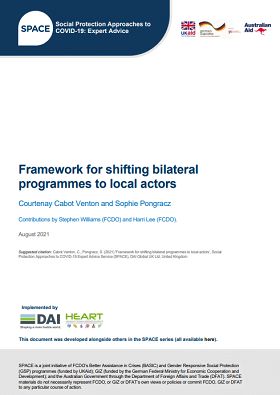
SPACE Framework for shifting bilateral programmes to local actors
Guidelines and Tools
This document presents an initial framing developed to support analysis of separation of functions, Value for Money and risk, to help facilitate a shift from UN/INGO led programmes, to locally-led models that draw on the complementarities between UN, INGO and LNO key strengths. It also reports on the...

SPACE Direct support to local actors: considerations for donors
Guidelines and Tools
The COVID-19 crisis has highlighted the critical role of local actors, including governments, and local and national NGOs, in the design and delivery of programming. Movement restrictions and a rapid scale-up of humanitarian and social protection assistance to new populations have driven a greater focus...
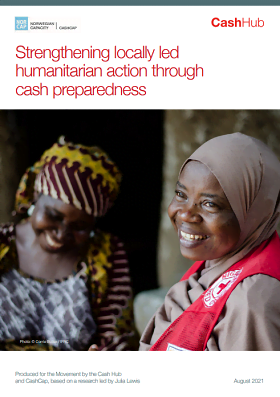
Strengthening locally led humanitarian action through cash preparedness
Report
This research, produced by the Red Cross and Red Crescent Movement’s Cash Hub and CashCap, looks at the links between CVA and localisation to understand how cash, and cash preparedness, can help to further localisation and strengthen locally led humanitarian action. It examines three questions: 1) How...

Economic Relief, Recovery, And Resilience Assessment For Southern Iraq
Report
The profile of Southern Iraq varies from that of the Northern ‘conflict-affected’ governorates most heavily impacted by the conflict with the Islamic State between 2014-2017. Southern Iraq has seen chronic underinvestment since the 1980s, with cumulative impacts building across the Iran-Iraq War and...

Global CWG Terms of Reference – 2021
Guidelines and Tools
The Global Cash Working Group (GCWG) (formerly the Geneva-based Cash Working Group (GbCWG)) was initially formed by practitioners in 2013 and led by ICRC and the CALP Network. In order to reflect a more inclusive and representative leadership arrangement and recognising the workload considerations from...

Forecast based financing – lessons learned on early actions with cash transfers
Report
The objective of the document is to present the lessons learned related to the implementation of early actions with cash transfers as part of the forecast-based financing mechanism implemented by the World Food Programme in the Yaque del Norte watershed in the Dominican Republic.

Cashing in: Turning Challenges into Opportunities when Evaluating Humanitarian Cash Assistance
Report
The use of cash transfers in humanitarian action has implications for evaluative activity. On the one hand, the utility of some evaluations has been strengthened by the increased attention that has been paid to evaluating cash transfers, the agreement of common outcome indicators and the creation of...

Leveraging the Potential for Group Cash Transfers: A complementary report to the Group Cash Transfer: Guidance and Tools (pilot version)
Report
This report is an accompanying document to the GCT Guidance and Toolkit. The report identifies internal and institutional barriers to using and scaling GCTs, along with mitigation measures. These were identified through an online survey, literature review and interviews with key informants that engaged...

Tip-sheet: Engaging beyond CVA and GCT communities of practice: Supporting the uptake and scaling of Group Cash Transfers (GCTs)
Guidelines and Tools
The objective of this tip-sheet is to support facilitating agencies’1 staff, volunteers and associates in engaging beyond the Cash and Voucher Assistance (CVA) and GCT Communities of Practice (CoPs) and to help address barriers in designing and implementing GCTs. The key actions are based on the “GCT...
